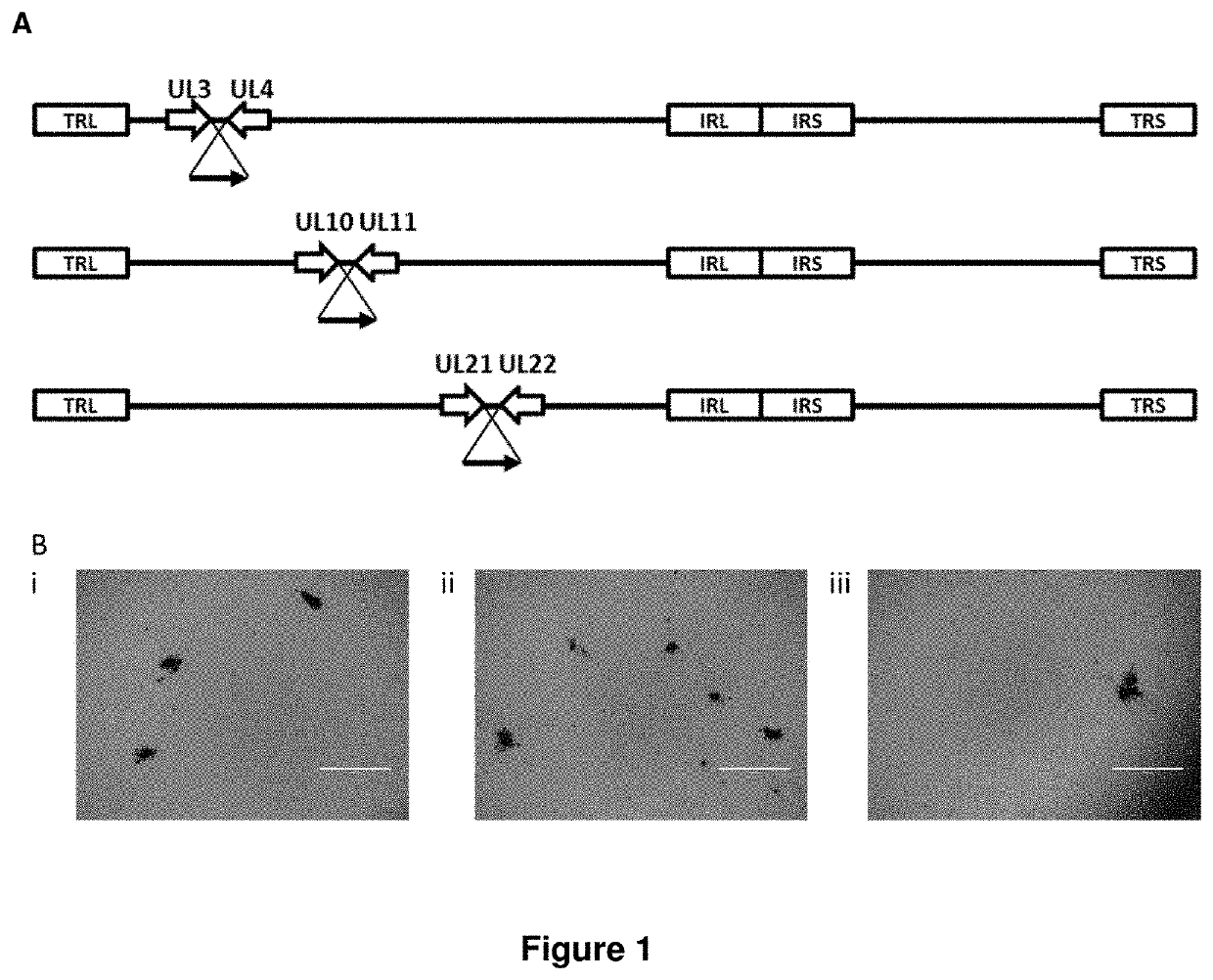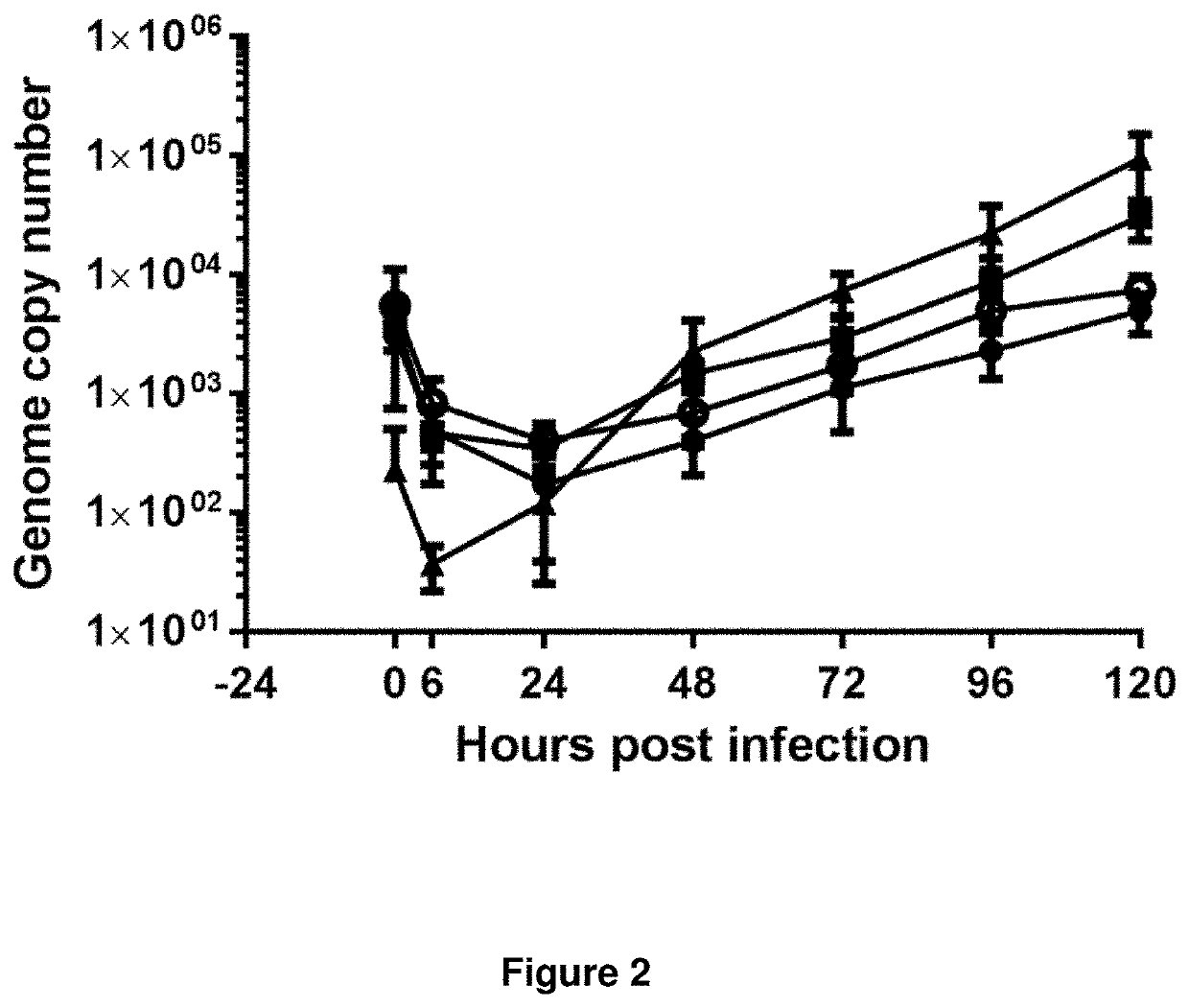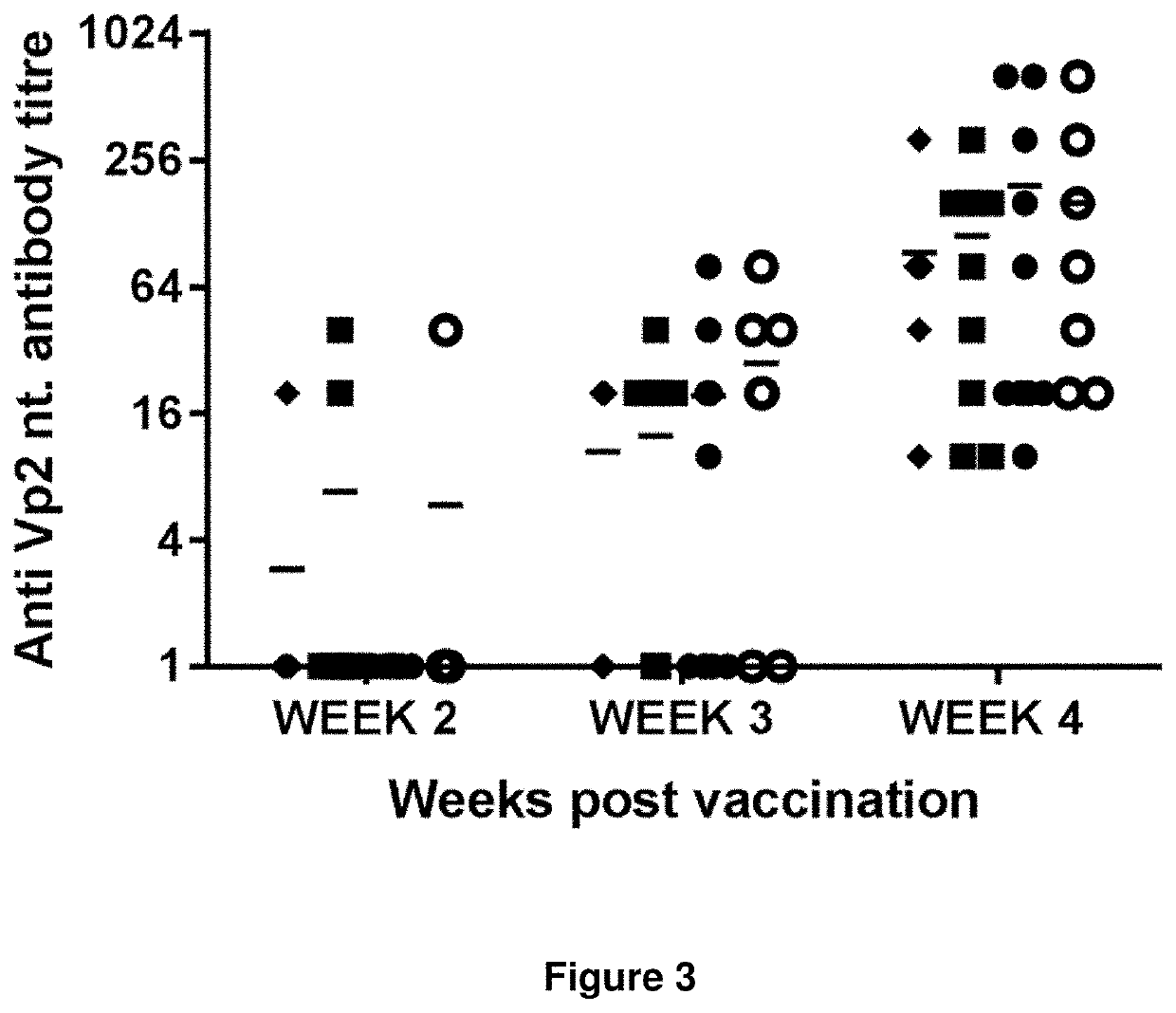Recombinant gallid herpesvirus 3 vaccines encoding heterologous avian pathogen antigens
- Summary
- Abstract
- Description
- Claims
- Application Information
AI Technical Summary
Benefits of technology
Problems solved by technology
Method used
Image
Examples
example 1
Analysis of Different Loci to Insert an Expression Cassette
[0117]The construction of a bacterial artificial chromosome (BAC) comprising the SB-1 genome has been reported by Petherbridge L et al. (J Virol Methods. 2009; 158: 11-7; Singh S M et al., Res Vet Sci. 2010; 89: 140-5). Using this pSB-1 BAC clone, we examine the potential of SB-1 as a novel recombinant vector for expressing protective antigens from other avian pathogens using the well-established recombineering techniques as described above. In order to identify locations in the SB-1 genome to insert expression cassettes coding for an antigen of an avian pathogen UL10 / UL11, UL3 / UL4, UL21 / UL22, UL40 / 41, UL26 / 27 and UL50 / UL51 intergenic regions were tested to insert galk bacterial expression cassette to produce the intermediate BAC constructs. Among the listed locations, UL26 / 27 and UL50 / 51 intergenic regions produced very little amount of virus (Table 4). Further, rSB-1 UL40 / 41 galK produced infectious virus (Table 4), but rS...
example 2
[0119]Replication of rSB-1-UL3 / 4VP2, rSB-1-UL10 / 11VP2 and rSB-1-UL21 / 22VP2 Viruses
[0120]In this study, we used the MDV-2 (GaHV3) strain SB-1 as a novel viral vector to generate three independent constructs that expressed IBDV VP2 in the intergenic loci of UL3 / 4, UL10 / 11 or UL21 / 22 loci of the viral genome.
[0121]Details of the construction of pSB-1-UL3 / 4VP2, pSB-1-UL10 / 11VP2 and pSB-1-UL21 / 22VP2 are summarized in FIG. 1A. Recombinant SB-1 viruses produced after transfection of BAC DNA were passaged three times in CEF to produce low-passaged virus stocks. Following the rescue of the viruses, growth curve experiment was carried out to compare the replication of the recombinant and parental SB-1 viruses in CEF cells as shown in FIG. 2. No significant differences were observed in the growth rate of pSB-1 and rSB-1-UL3 / 4VP2 viruses between 48 and 120 hours post infection. In contrast expression of the VP2 expression cassette from the UL10 / 11 locus and the UL21 / 22 locus appeared to slow th...
example 3
[0123]Having narrowed down the integration sites to UL3 / 4, UL10 / 11 and UL21 / 22 we further examined the immunogenic potential of the VP2 protein (Fahey K J et al., J Gen Virol. 1989; 70 (Pt 6):1473-81) of infectious bursal disease virus (IBDV), the causative agent of infectious bursal disease (IBD, Gumboro disease) delivered by the recombinant SB-1 vector.
Vaccine Development Against IBDV: Immunization Study
[0124]One-day-old SPF RIR chicks reared at the Experimental Animal House at Pirbright were used for the validation experiments. All procedures were performed in accordance with the UK Animal (Scientific Procedures) Act 1986 under Home Office Personal and Project licenses, after the approval of the internal ethical review committee.
[0125]Forty 1-day old chicks were divided into 4 groups of 10 birds each. Each of the three groups received subcutaneous injections of rSB-1-UL10 / 11VP2, rSB-1-UL21 / 22VP2 or rSB-1-UL3 / 4VP2 vaccine viruses respectively, each comprising 3×103 pfu in 100 μl i...
PUM
 Login to View More
Login to View More Abstract
Description
Claims
Application Information
 Login to View More
Login to View More - R&D Engineer
- R&D Manager
- IP Professional
- Industry Leading Data Capabilities
- Powerful AI technology
- Patent DNA Extraction
Browse by: Latest US Patents, China's latest patents, Technical Efficacy Thesaurus, Application Domain, Technology Topic, Popular Technical Reports.
© 2024 PatSnap. All rights reserved.Legal|Privacy policy|Modern Slavery Act Transparency Statement|Sitemap|About US| Contact US: help@patsnap.com










